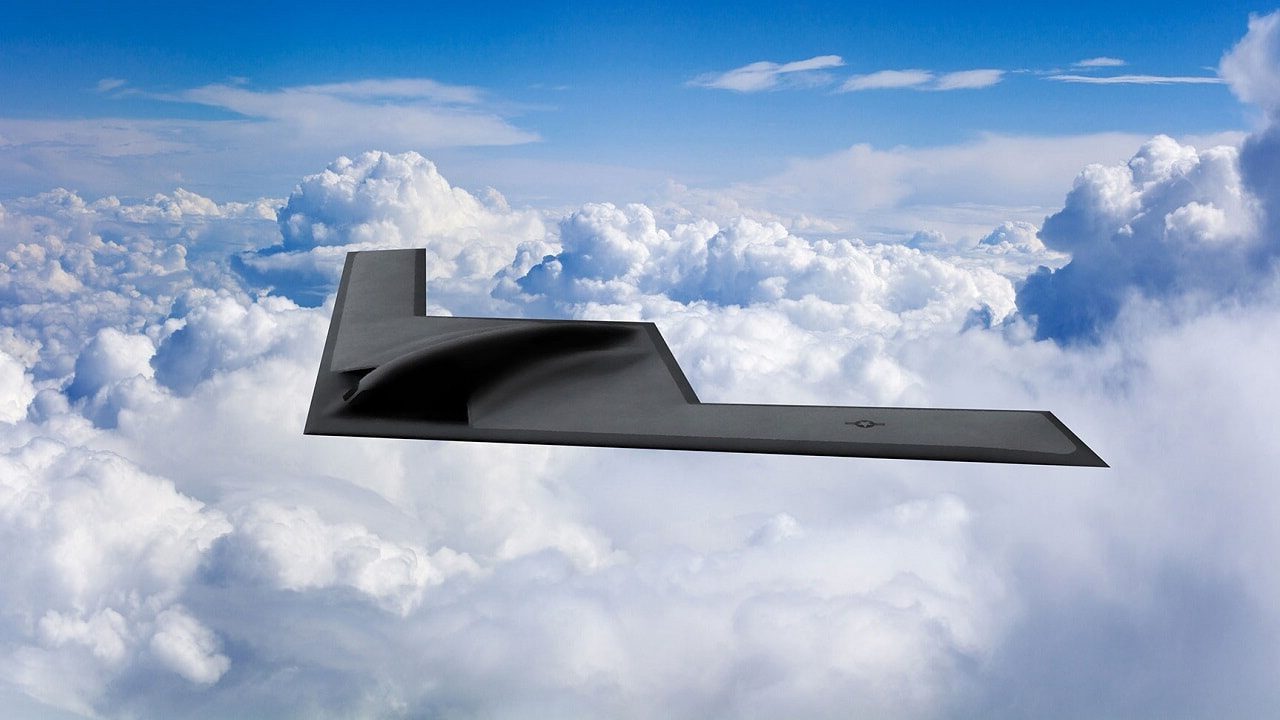The B-21 Raider, the U.S. Air Force’s newest stealth bomber, is still a few years out from taking to the skies publicly. But official statements and press releases have allowed us to sketch out some of the capabilities and features of the futuristic bomber.
The B-21 Raider
According to the Air Force and the manufacturer, Northrop Grumman, the B-21 Raider will be a dual-capable penetrating strike stealth bomber with the capacity to deliver both conventional and nuclear weapons.
The Air Force plans the B-21 Raider to replace the B-1 Lancer and B-2 Spirit and form the backbone of its future bomber fleet alongside the venerable B-52 Stratofortress. The new stealth bomber aims to provide the payload, operational range, and penetrability of adversary air defenses that the current U.S. bomber fleet can’t achieve.
According to the Air Force, the B-21 Raider will be just one aircraft in a larger family of systems—presumably manned and unmanned—for conventional Long-Range Strike, including Intelligence, Surveillance and Reconnaissance (ISR), electronic attack, and communication, among other capabilities.
The B-21 Raider is designed to be capable of carrying nuclear weapons and conducting both manned and unmanned missions. On the conventional side, the B-21 Raider will be capable of carrying and deploying a broad mix of stand-off and direct-attack munitions.
Perhaps one of the most important (and far-seeing) features of the B-21 Raider is the aircraft’s open systems architecture that reduces integration risk and enables competition for future modernization programs. In short, the B-21 Raider is designed in such a way that future upgrades designed to meet threats that don’t currently exist will be easier and financially healthier (because of the competition between different companies).
Where’s the B-21 Raider At?
According to the Air Force, the B-21 Raider will be operational in the mid-2020s. The aircraft is expected to fly sometime next year (initially, it was supposed to fly in 2022), but despite the delay, the B-21 Raider program overall is on time.
However, the Air Force and Northrop Grumman still plan to roll out the B-21 Raider sometime this year. Picture renderings by the Air Force and the manufacturer suggest that the new bomber will look a lot like the B-2 Spirit that is currently in service.
The B-21 Raider comes with a hefty price tag, and the Air Force expects that it will cost more than $600 million a piece. The Air Force plans to purchase at least 100 bombers.
As to why the U.S. military needs a new bomber—and especially one that is so expensive—Northrop Grumman claims that “currently only 10 percent of our nation’s bomber force is capable of penetrating advanced adversary air defenses. As our adversaries have continued investing heavily in sophisticated technologies and weapons platforms that leave them free to act maliciously or extend their reach, a new bomber is critical to deterring potential adversaries, reassuring allies and keeping our nation safe.”
1945’s New Defense and National Security Columnist, Stavros Atlamazoglou is a seasoned defense journalist specializing in special operations, a Hellenic Army veteran (national service with the 575th Marine Battalion and Army HQ), and a Johns Hopkins University graduate. His work has been featured in Business Insider, Sandboxx, and SOFREP.

